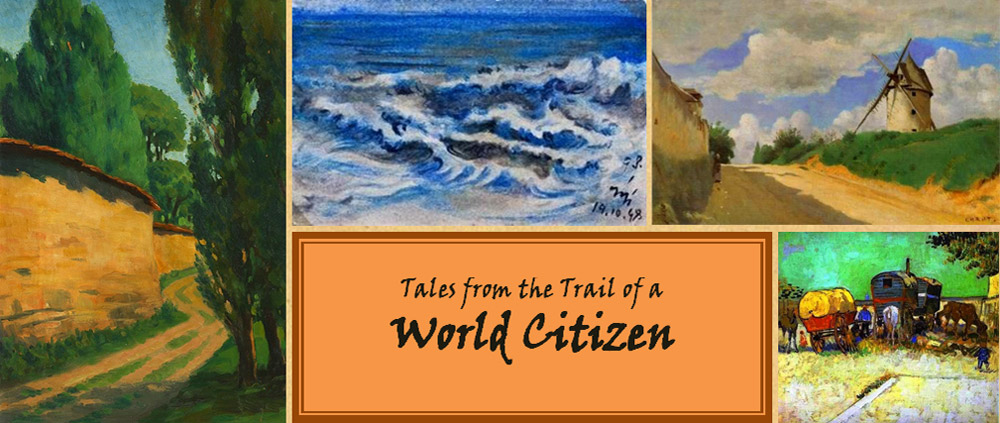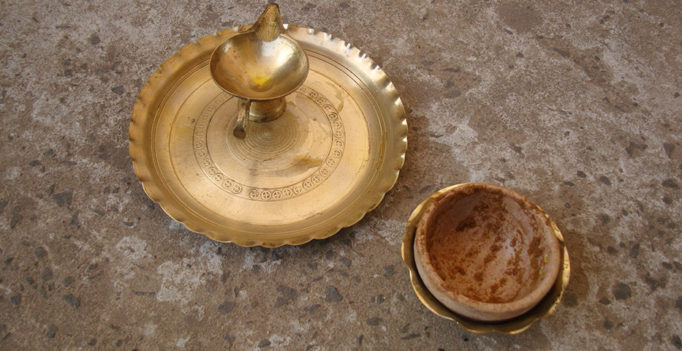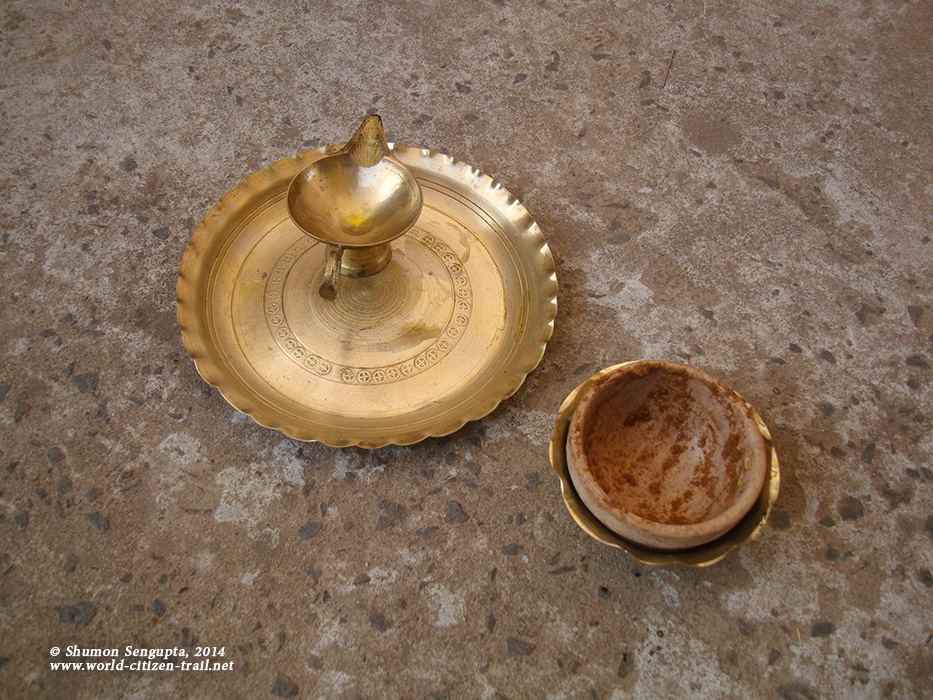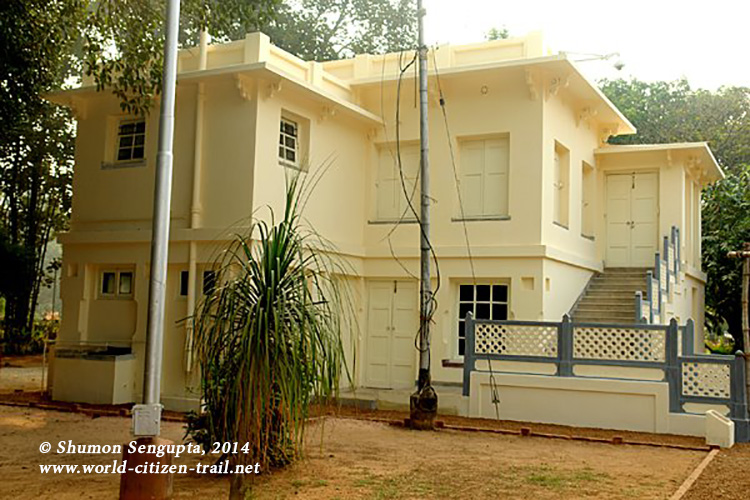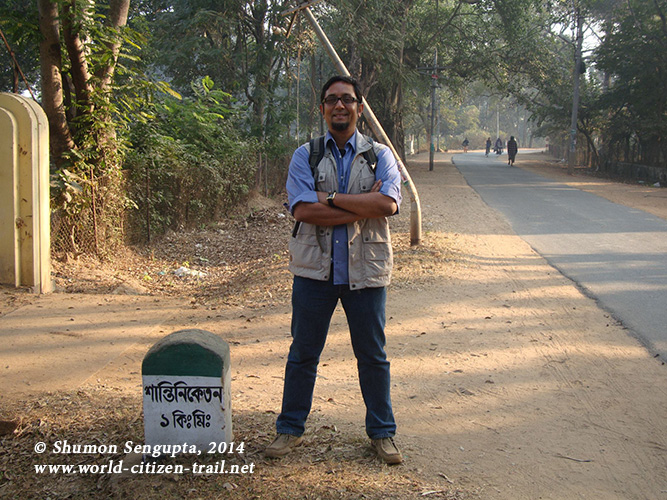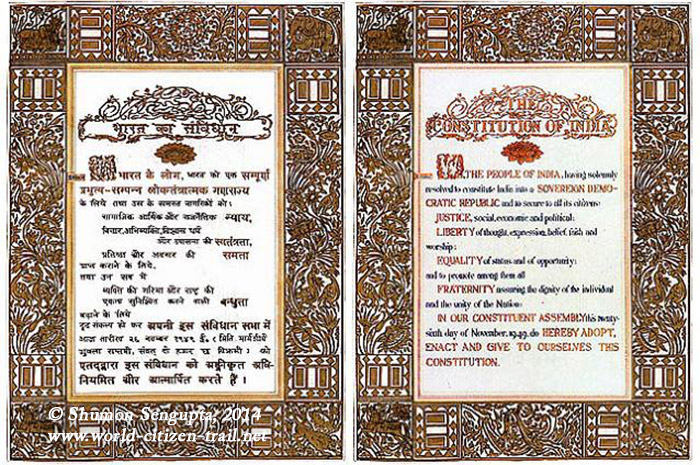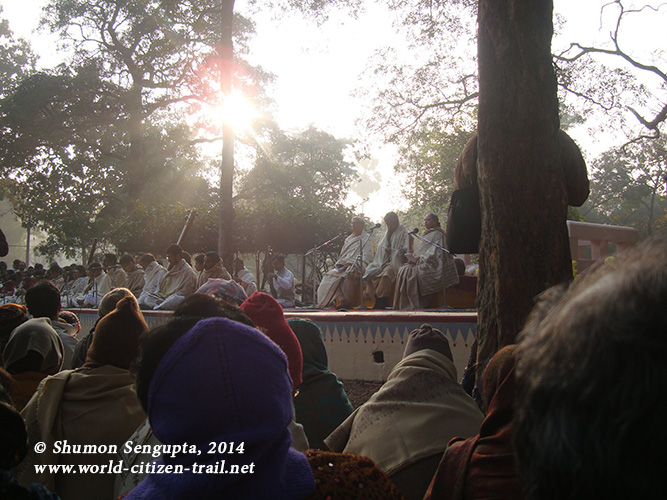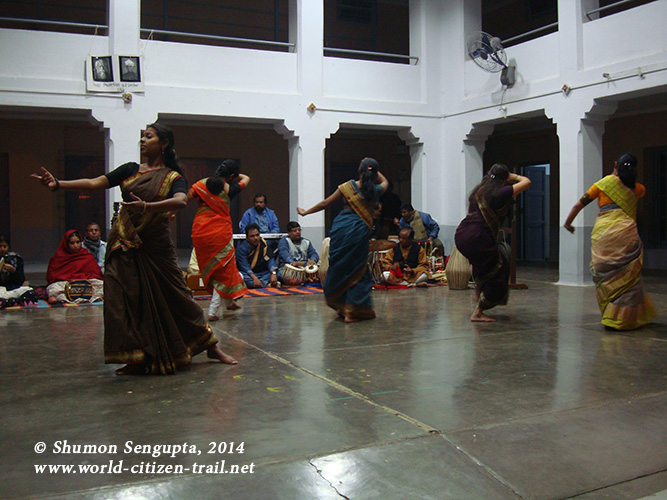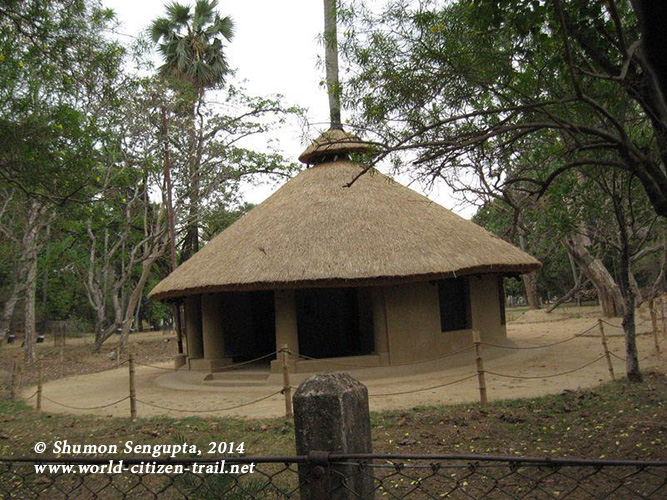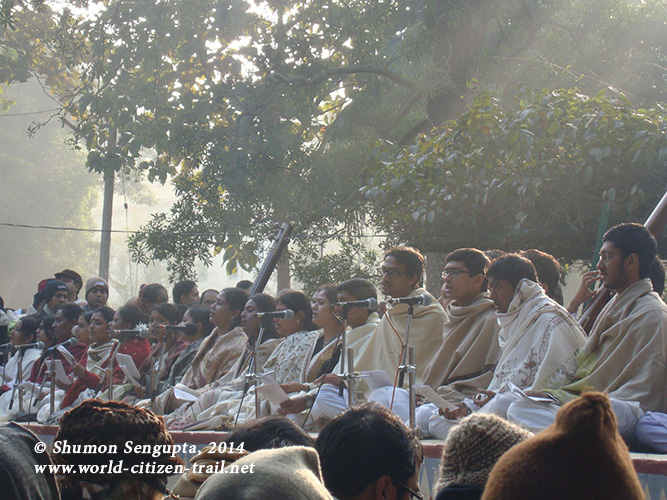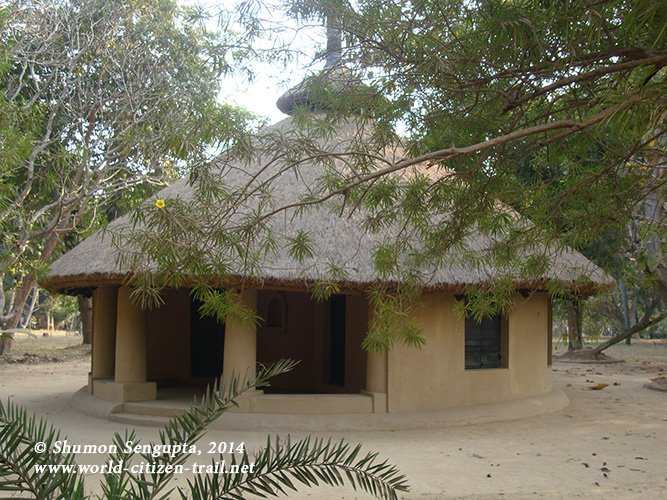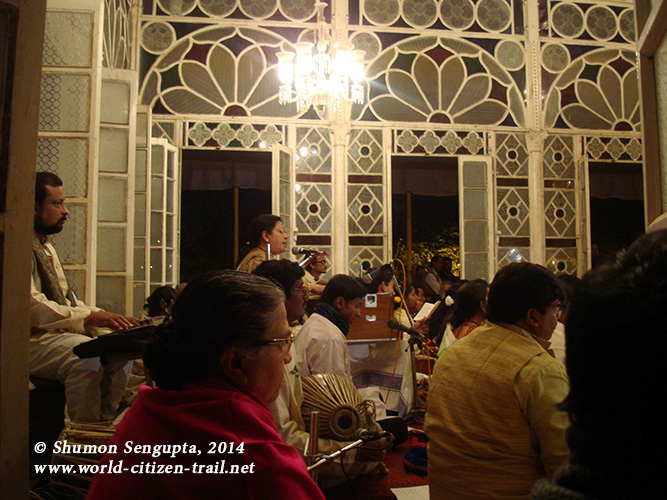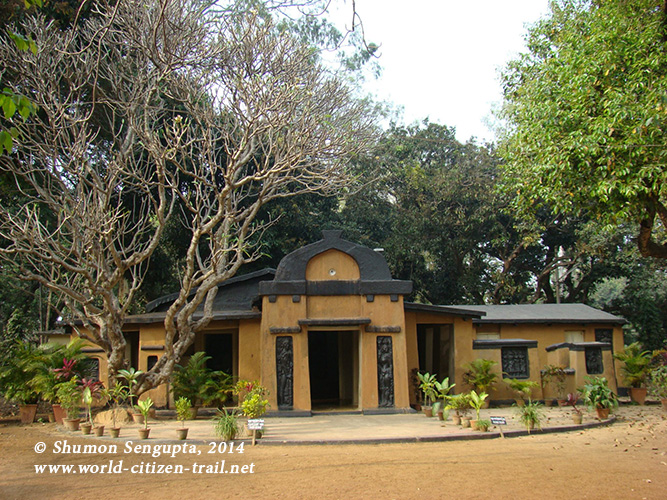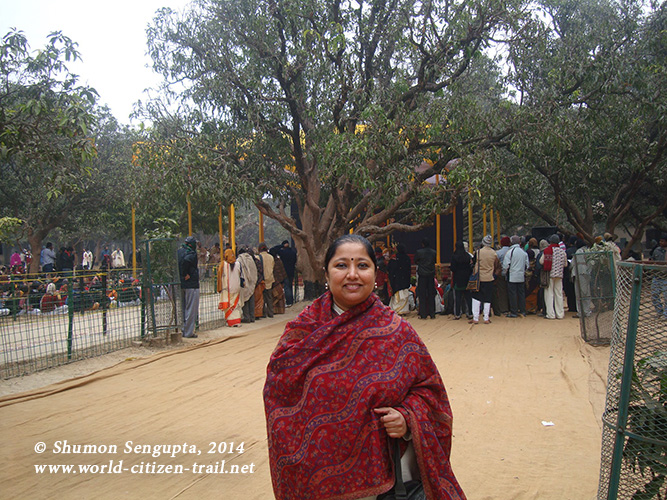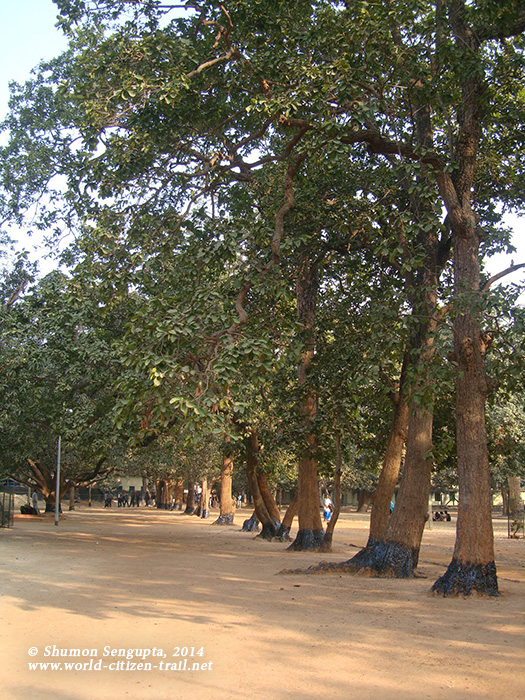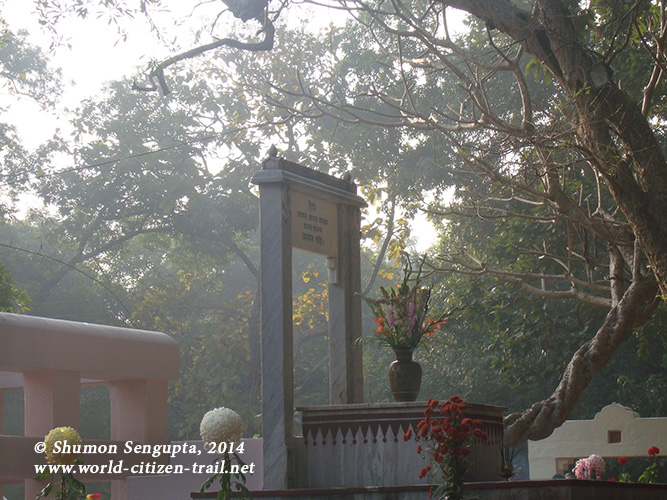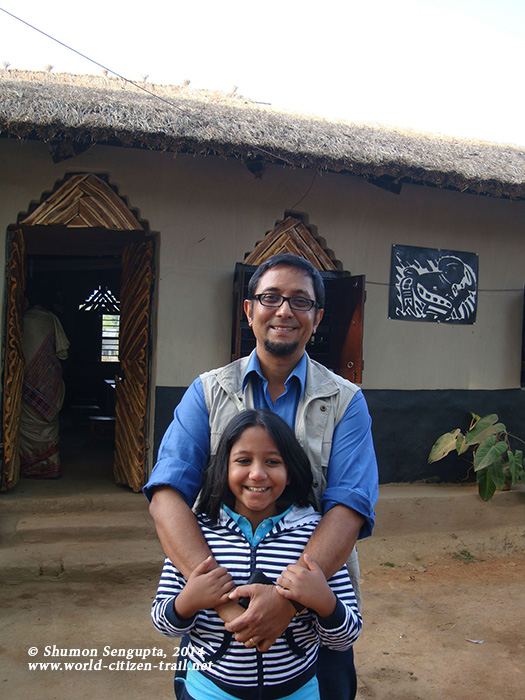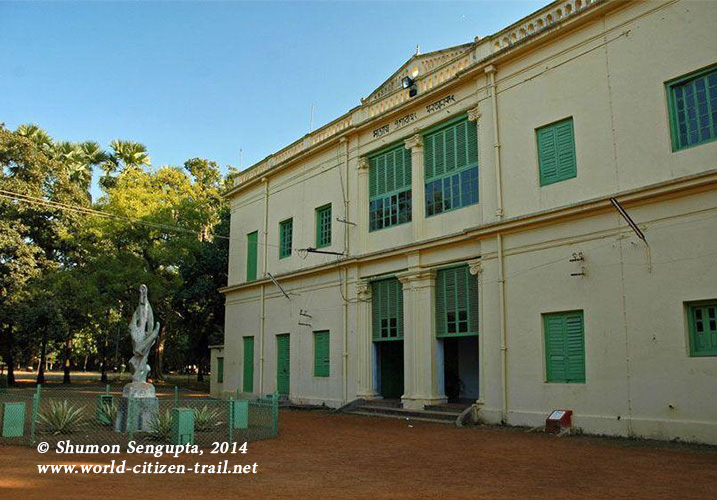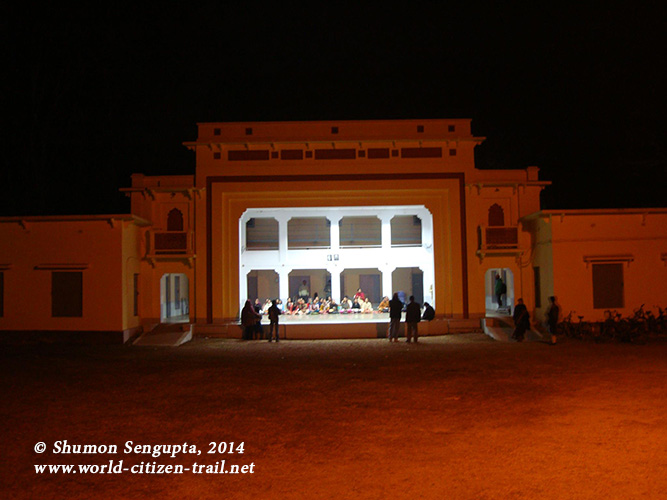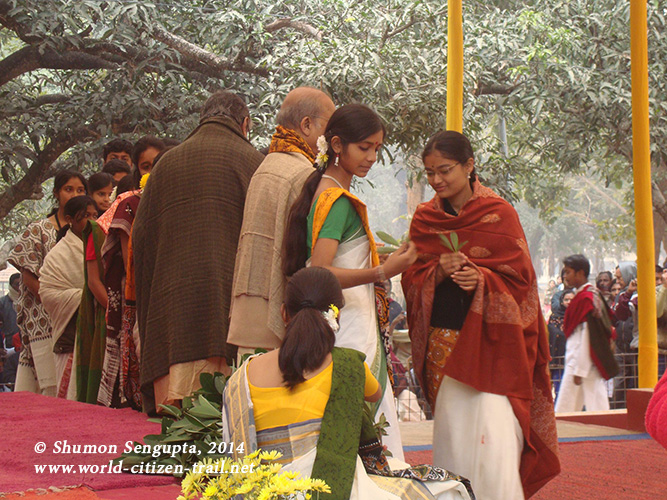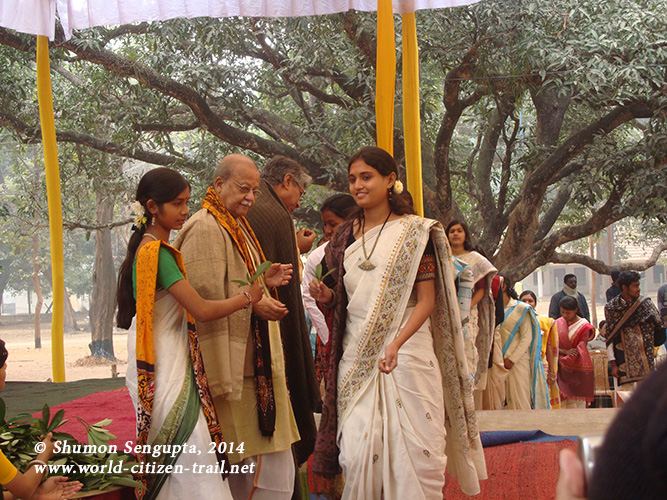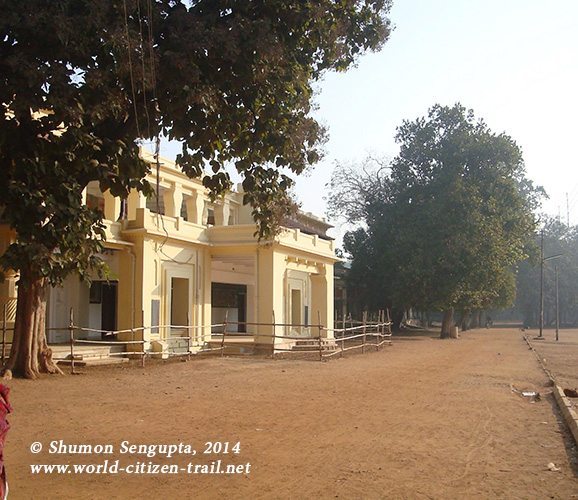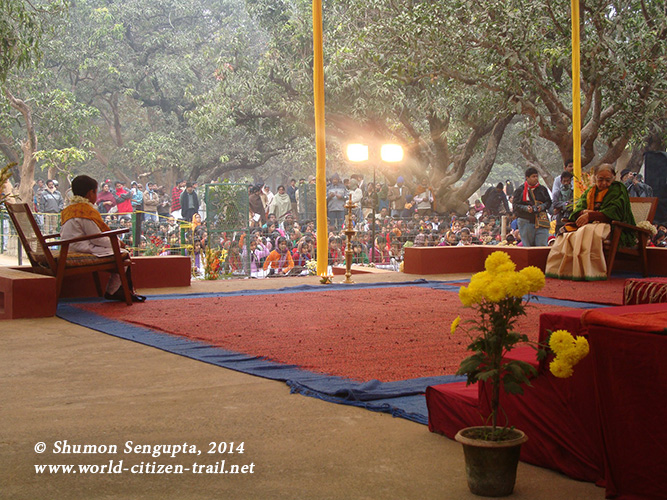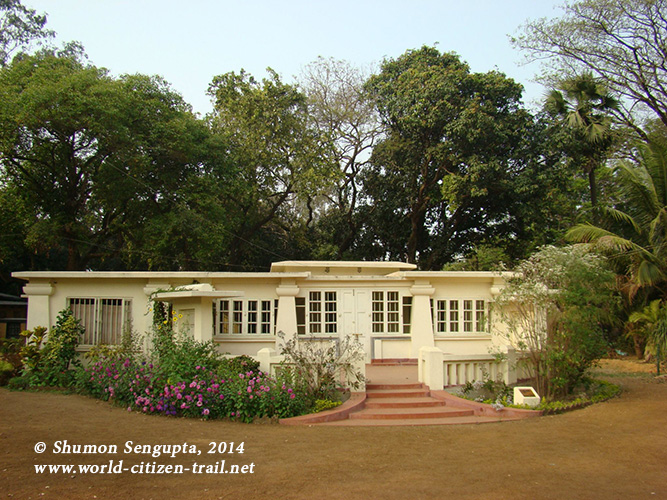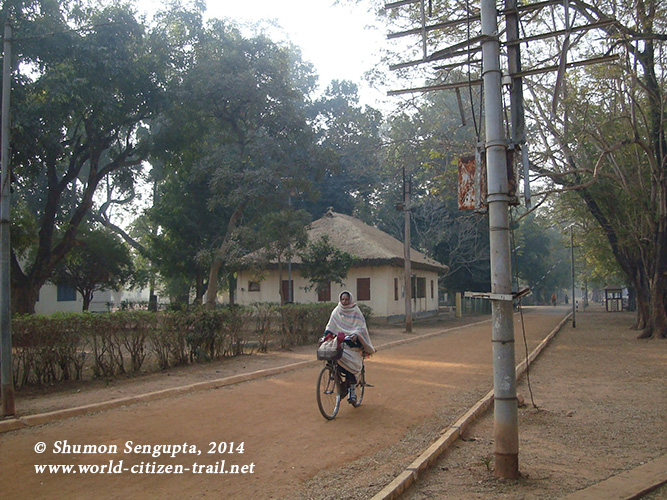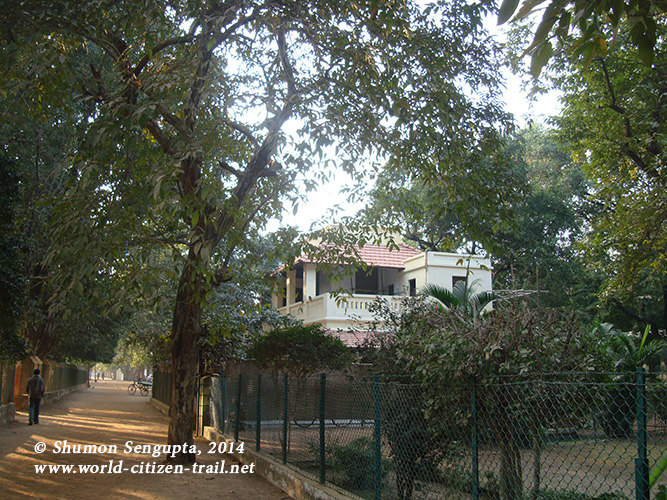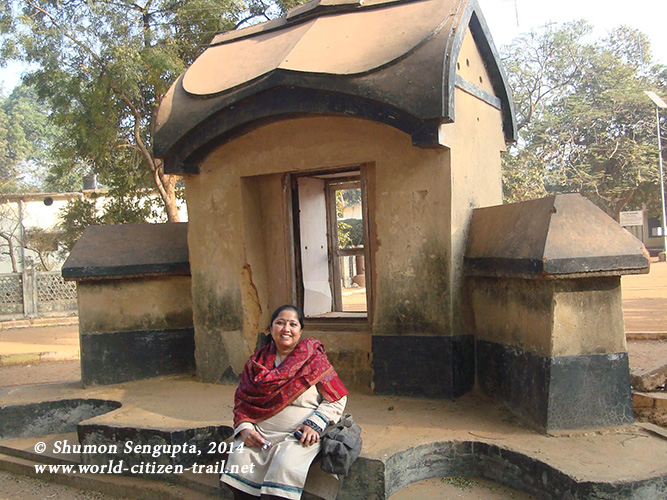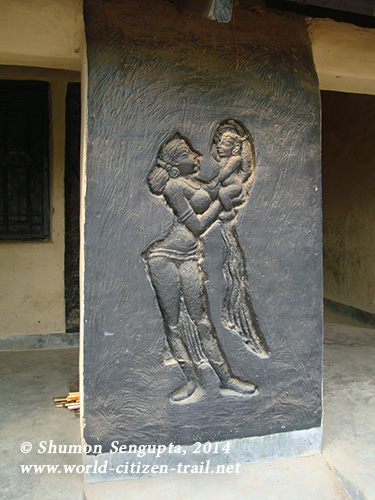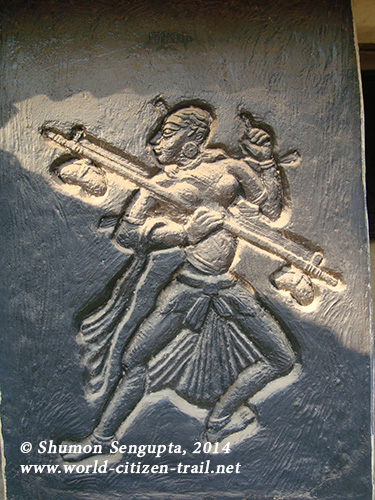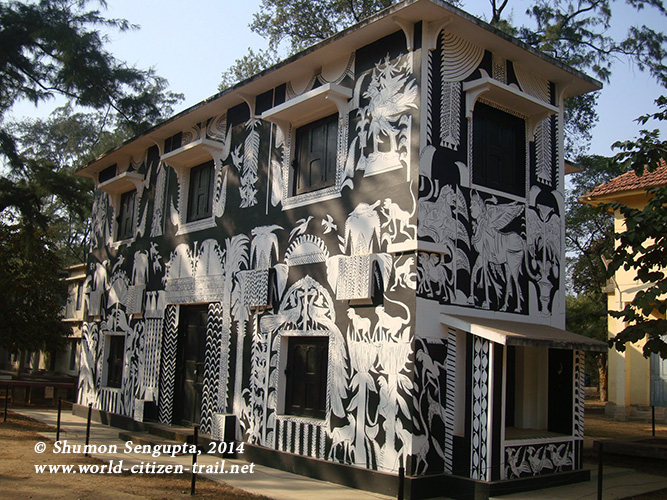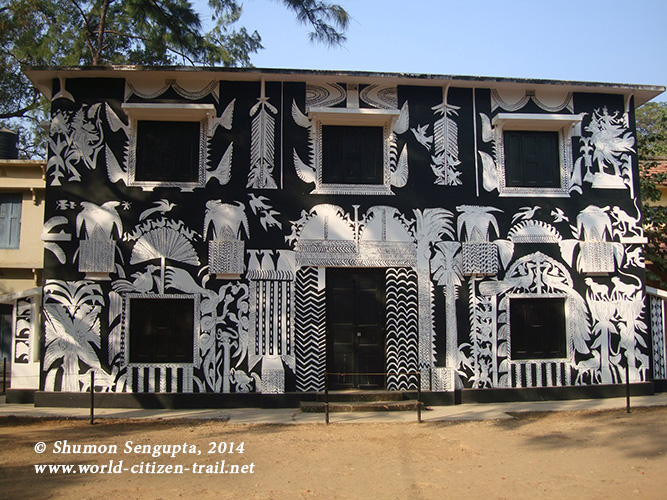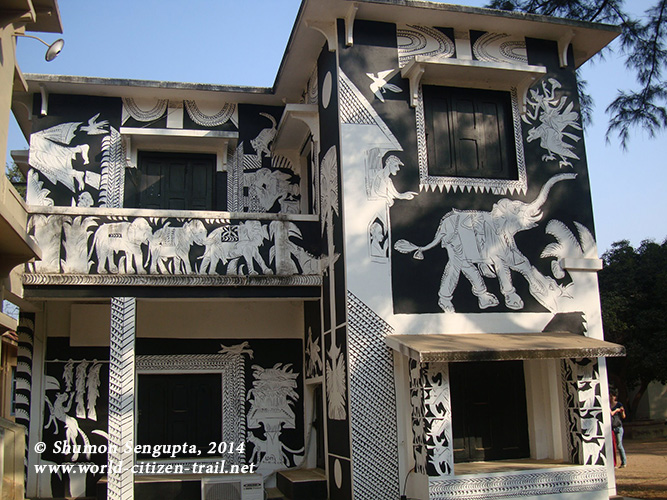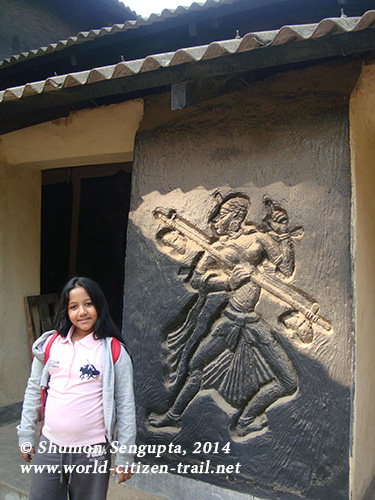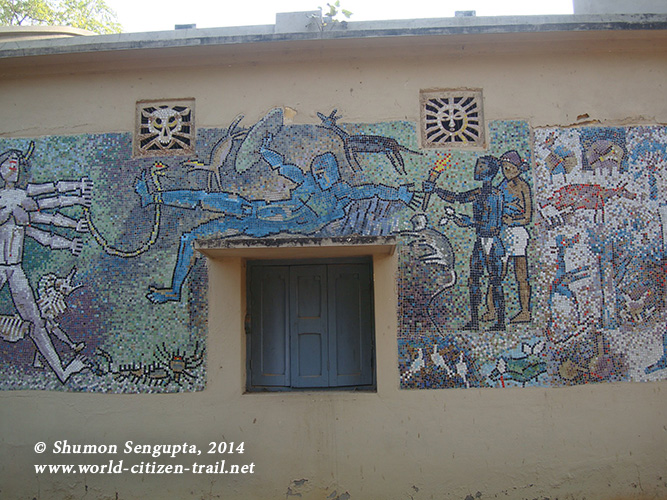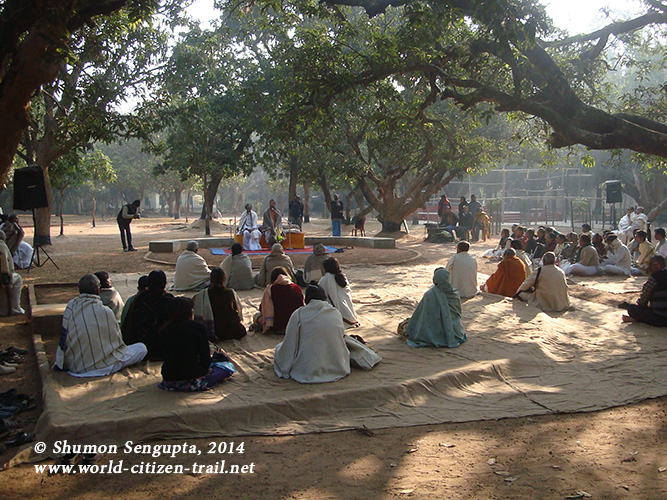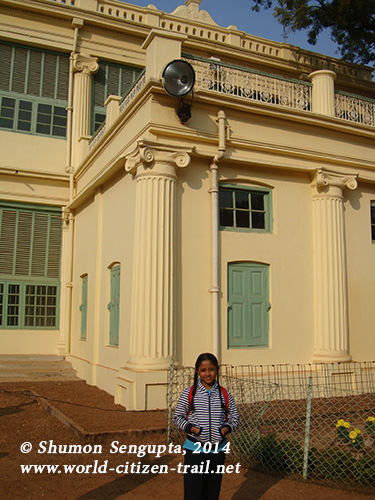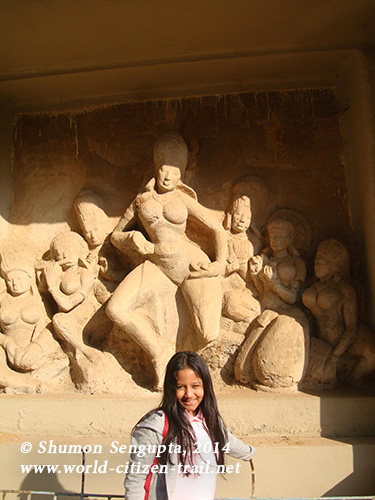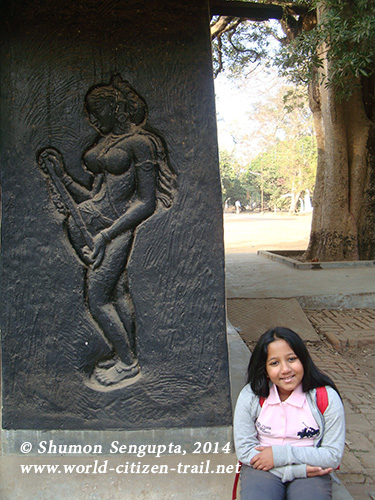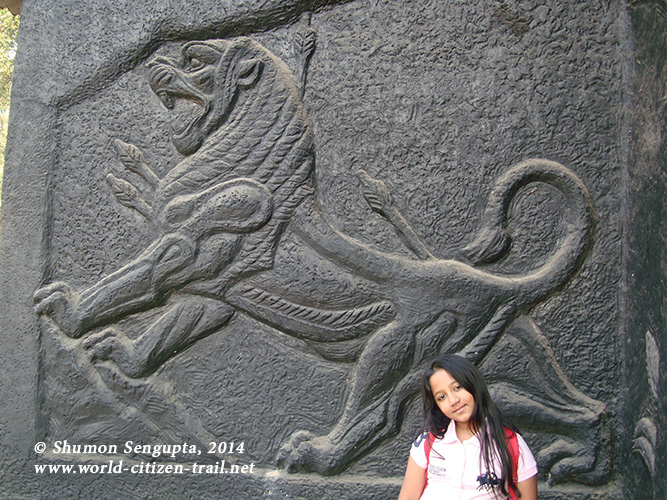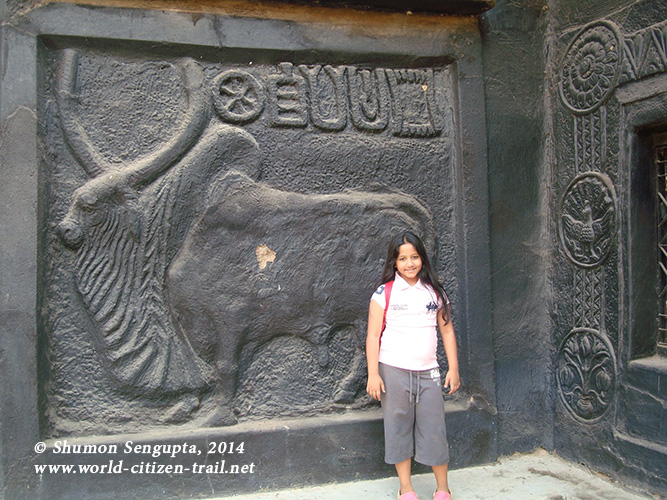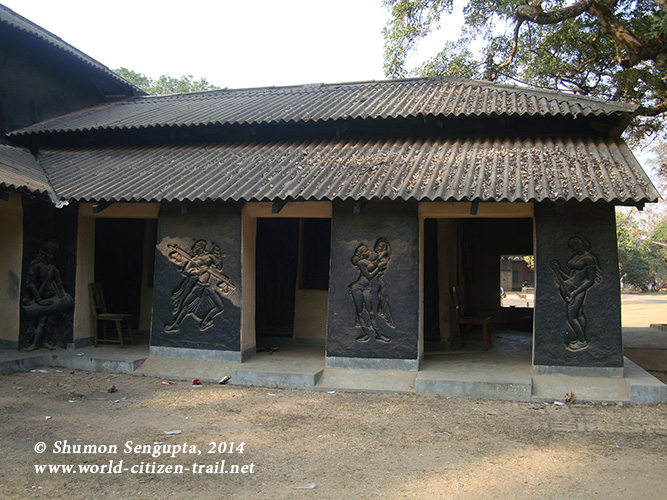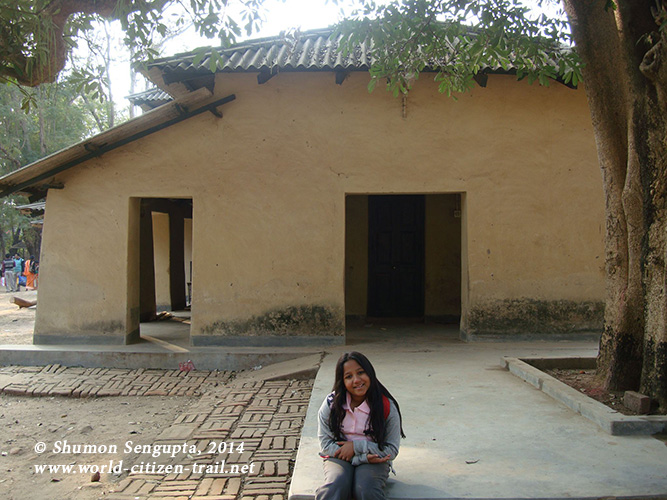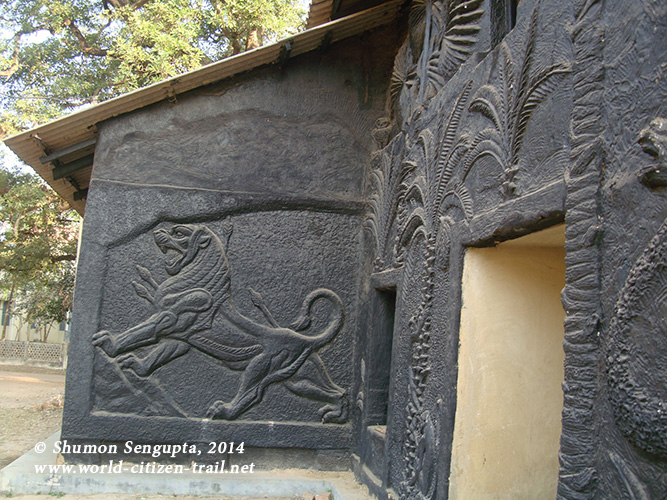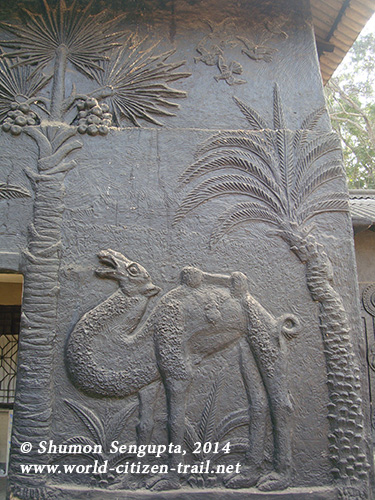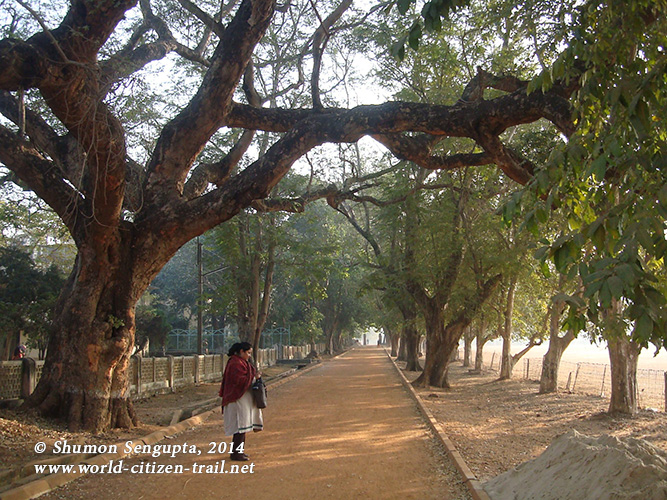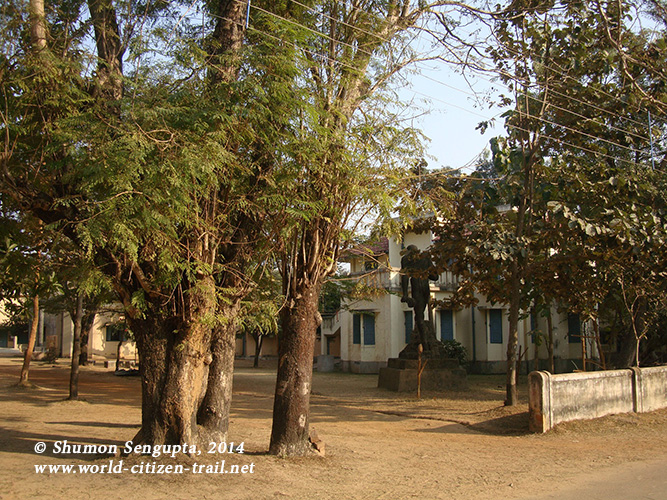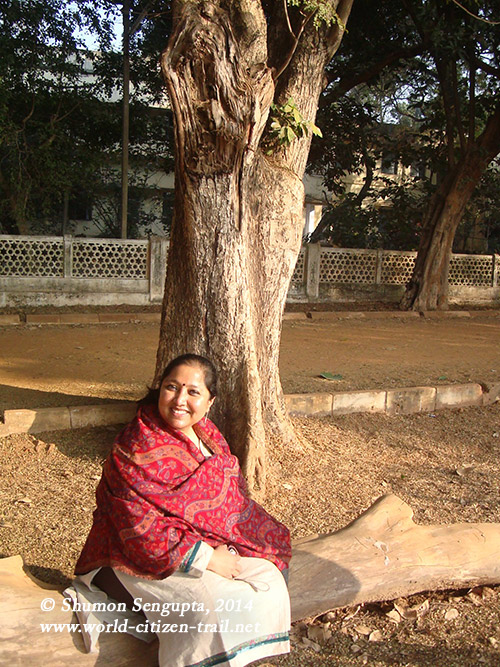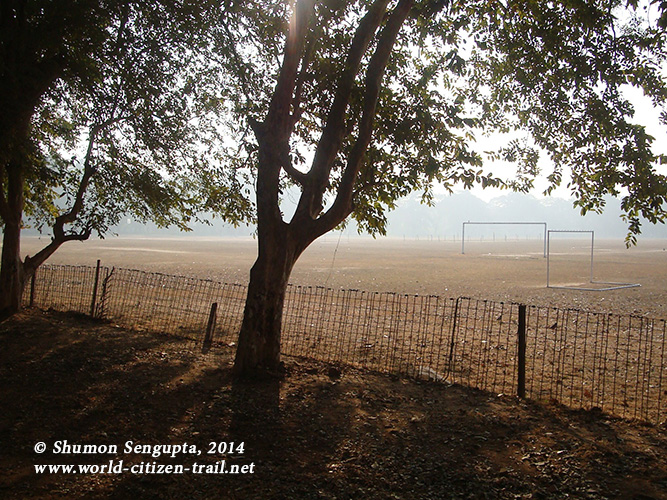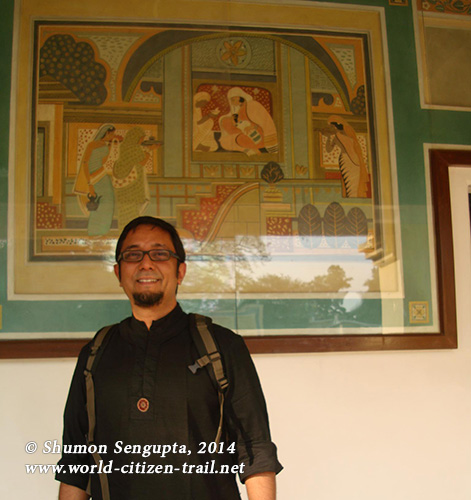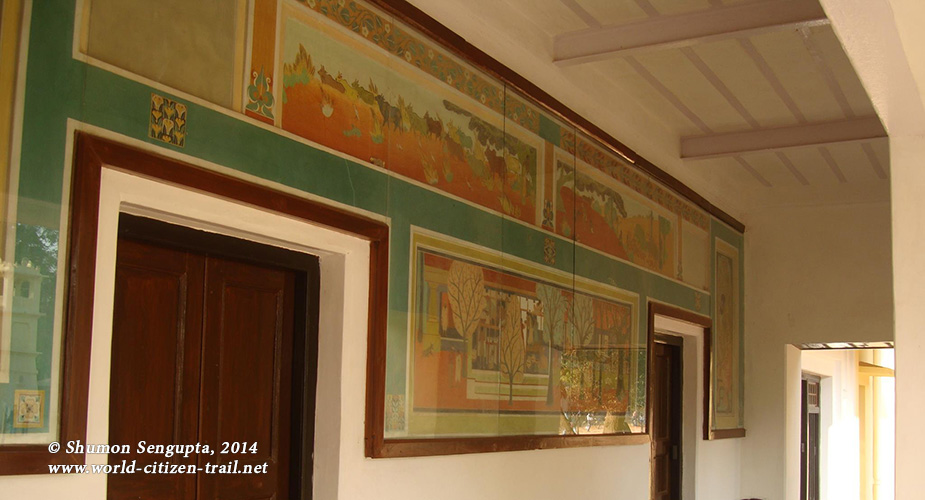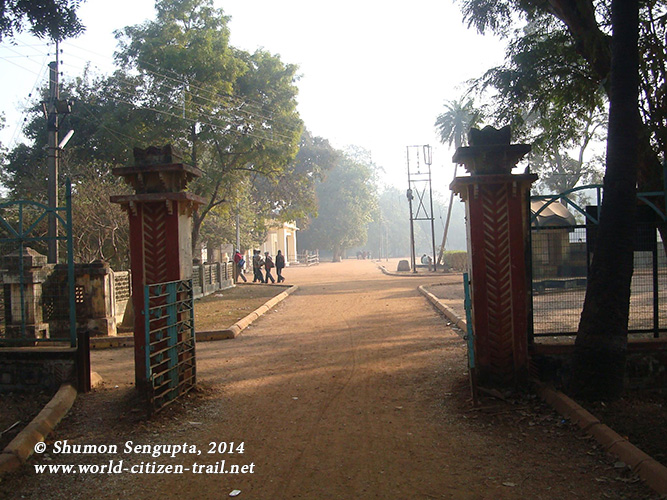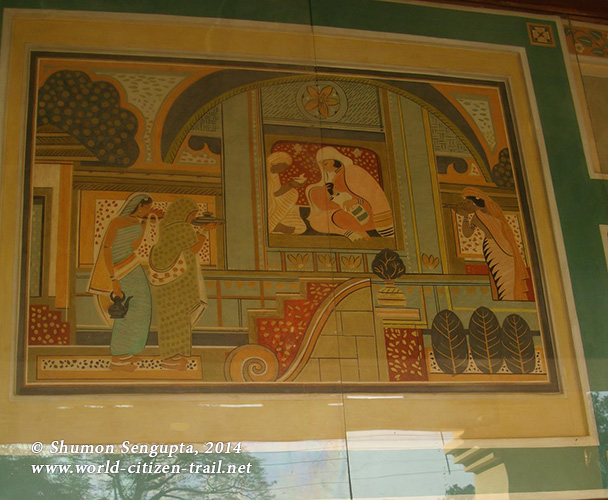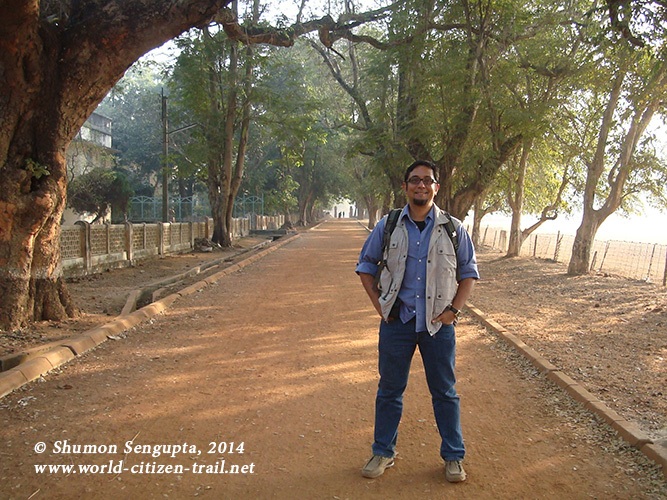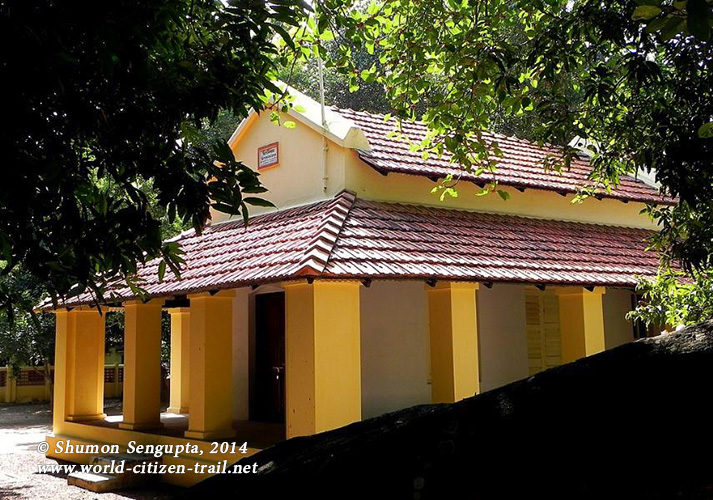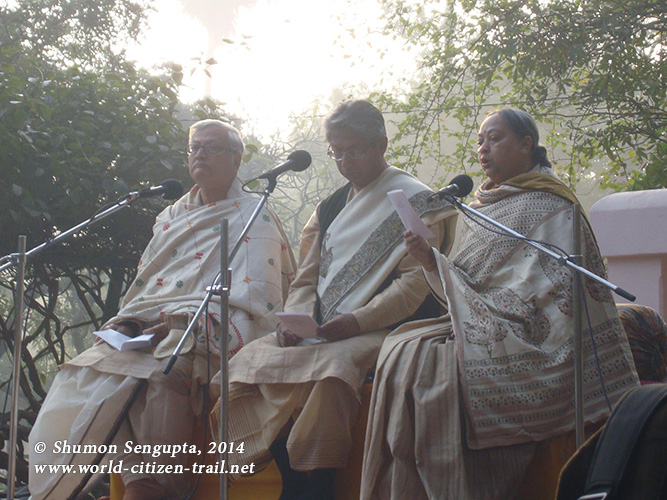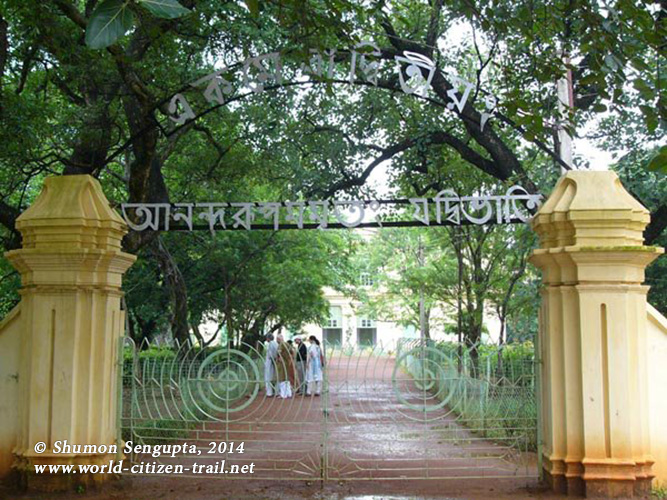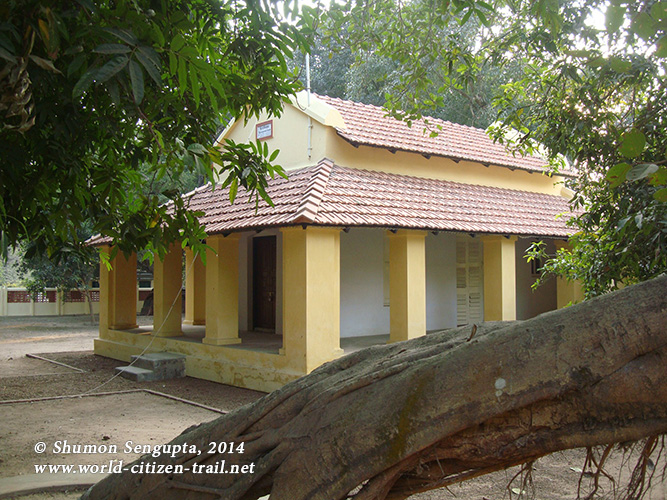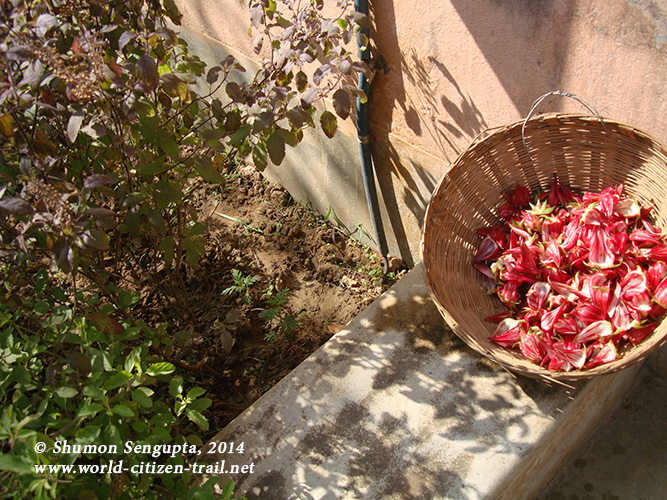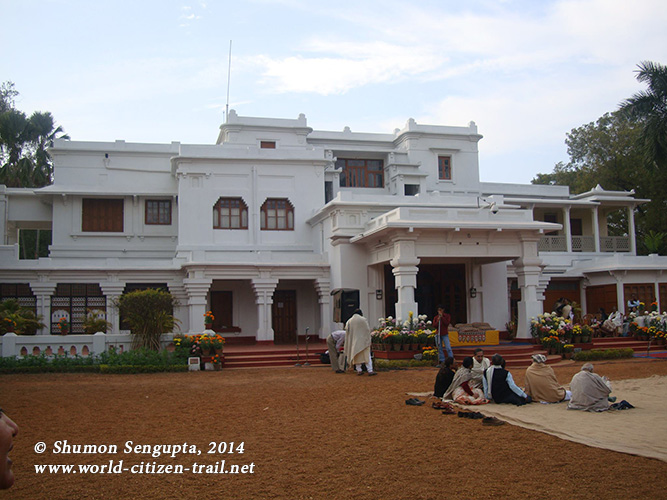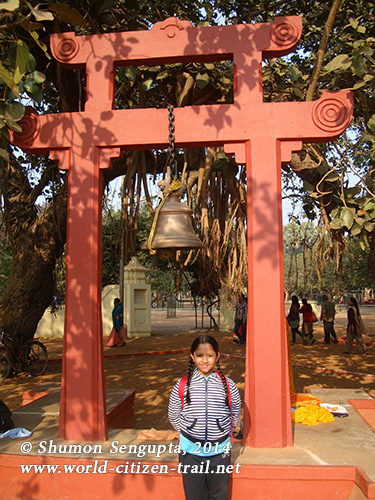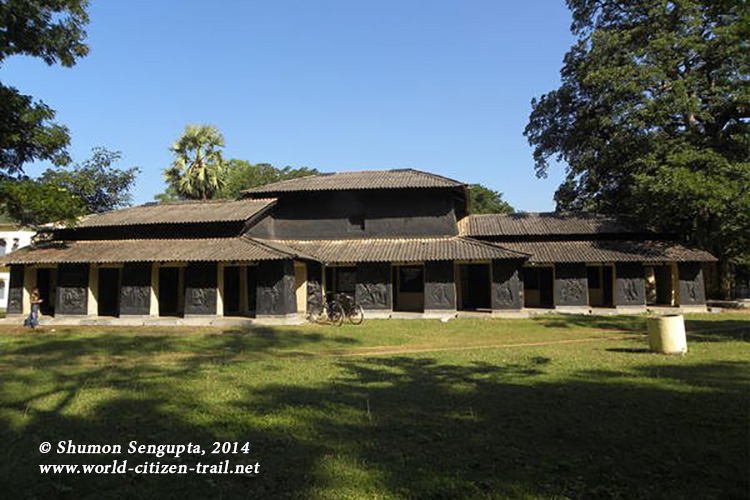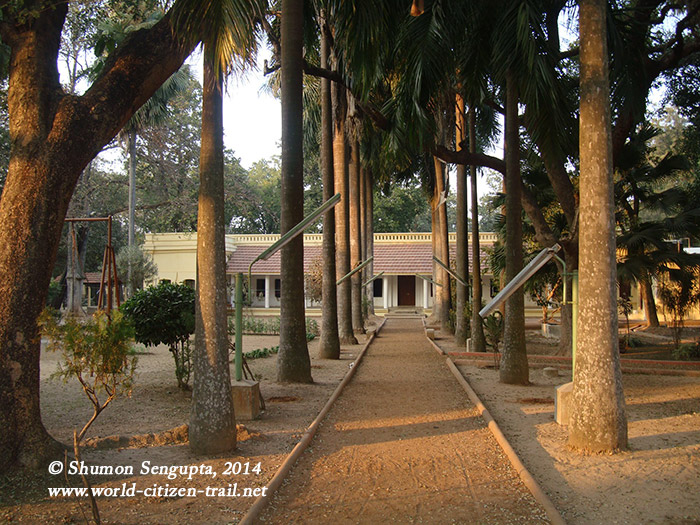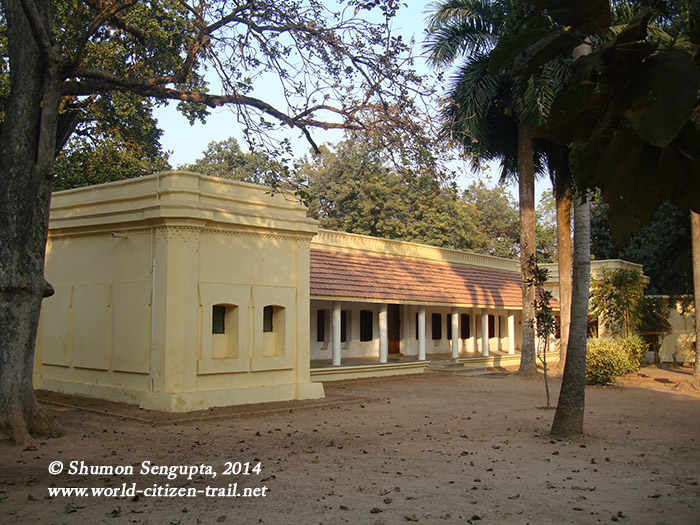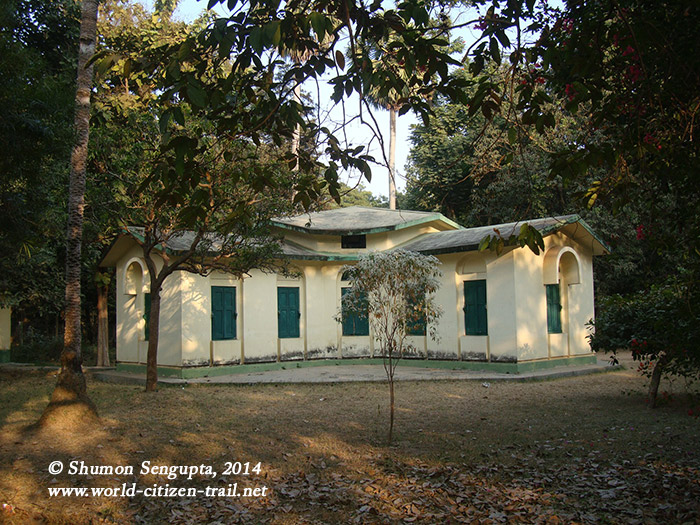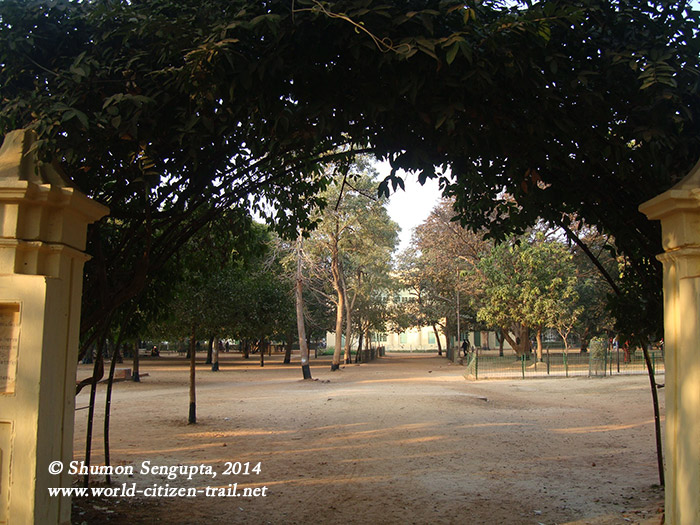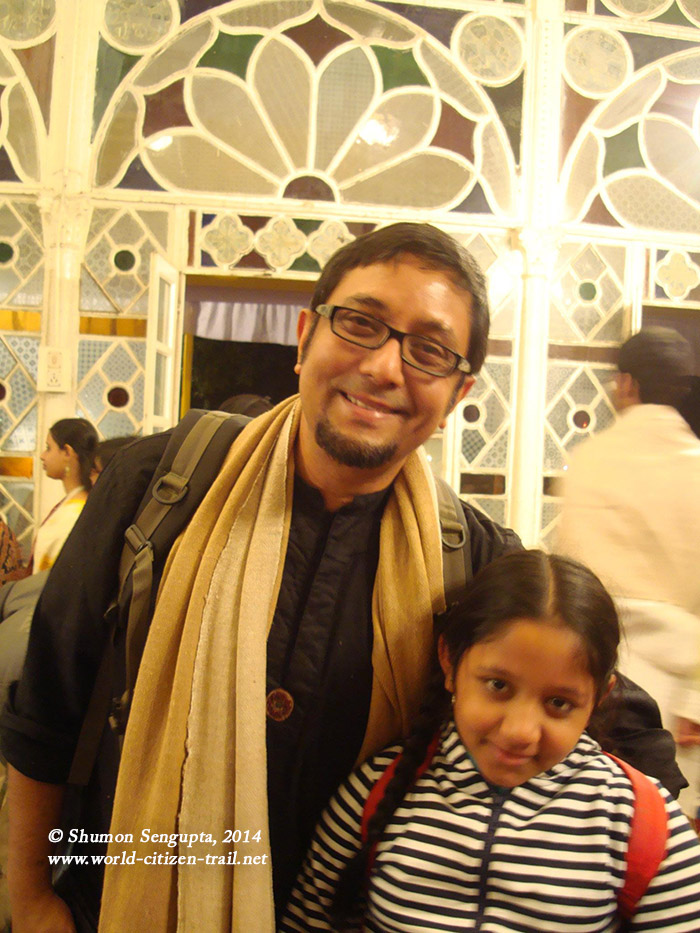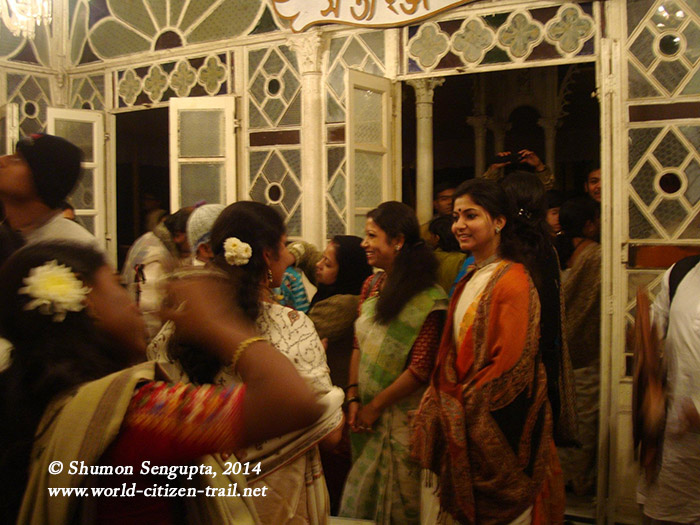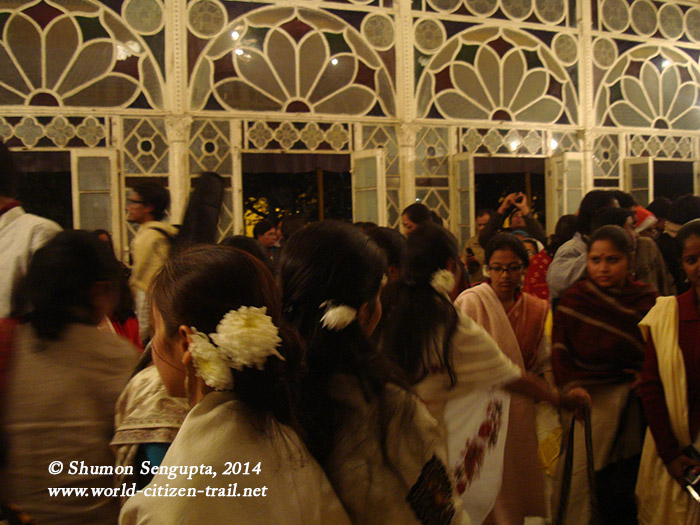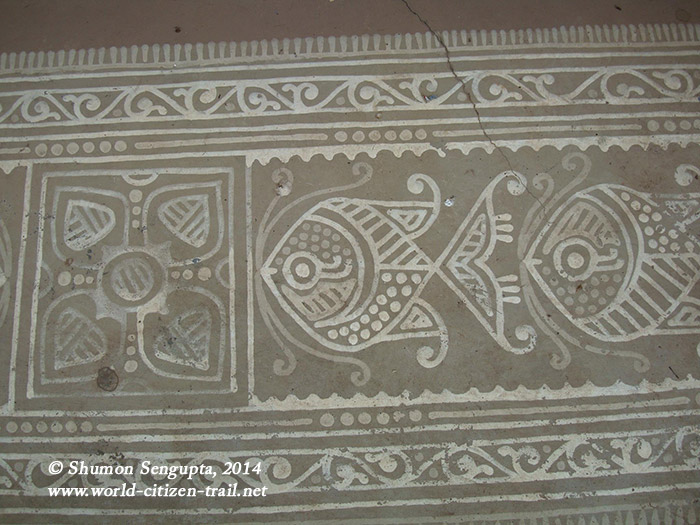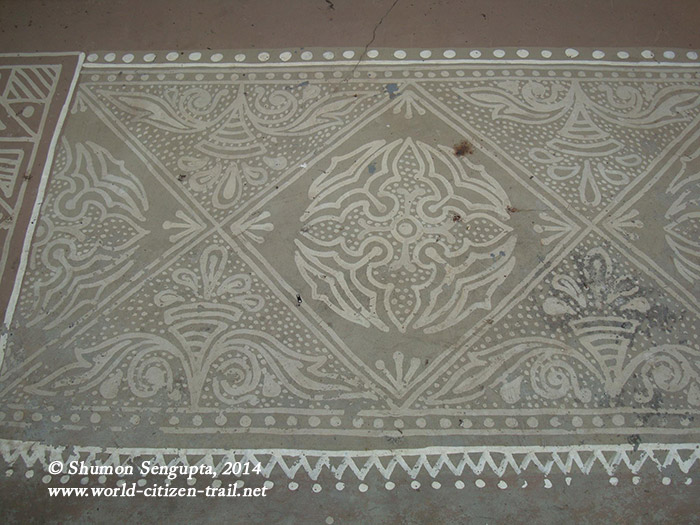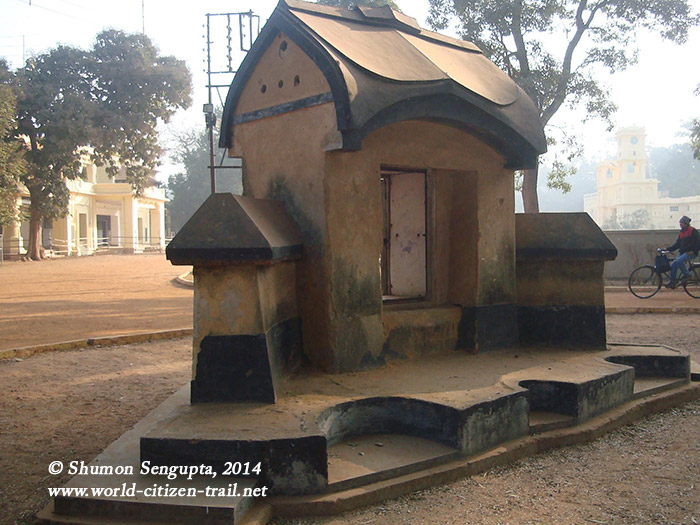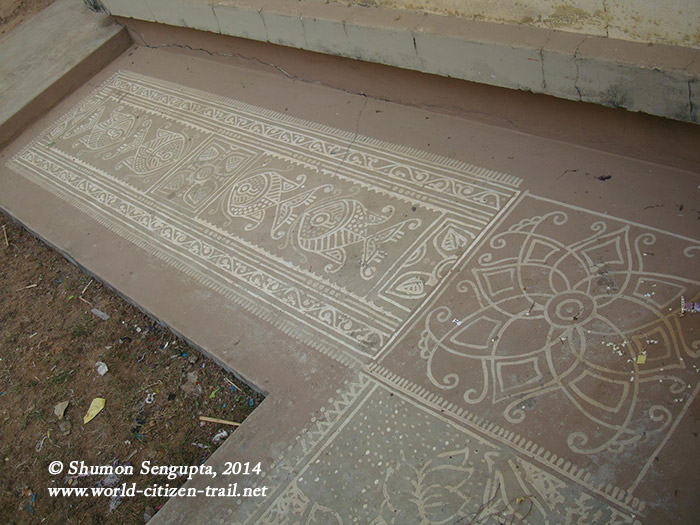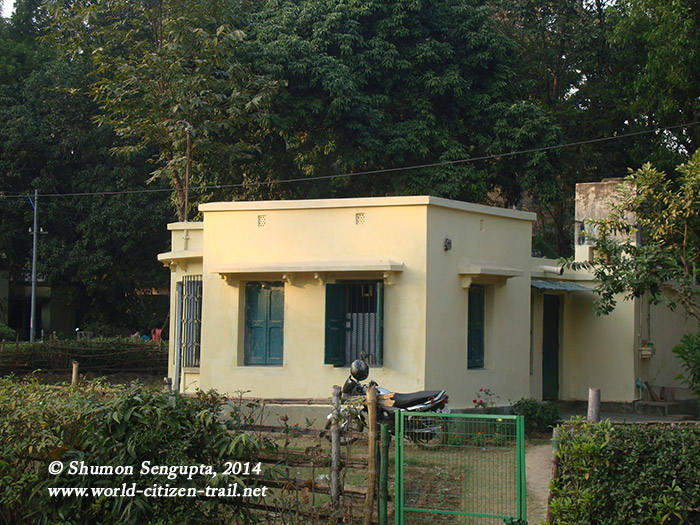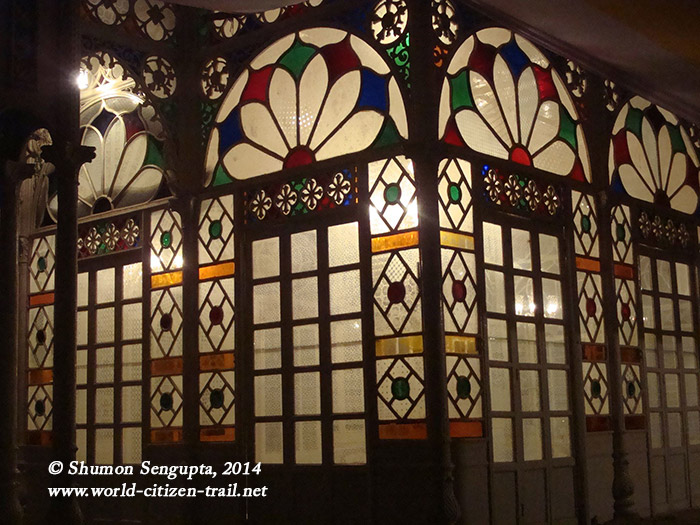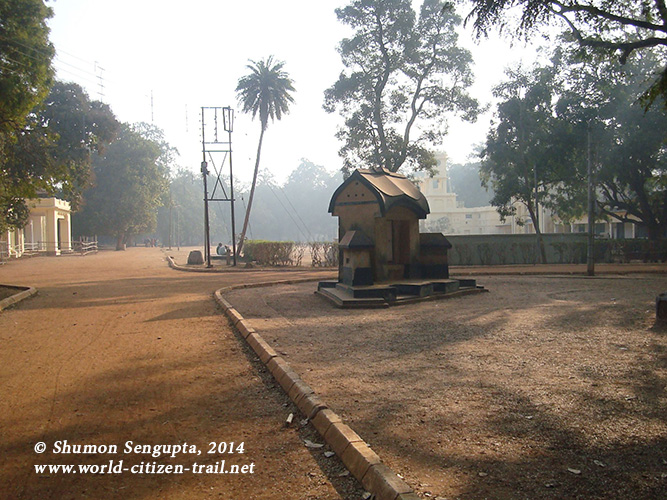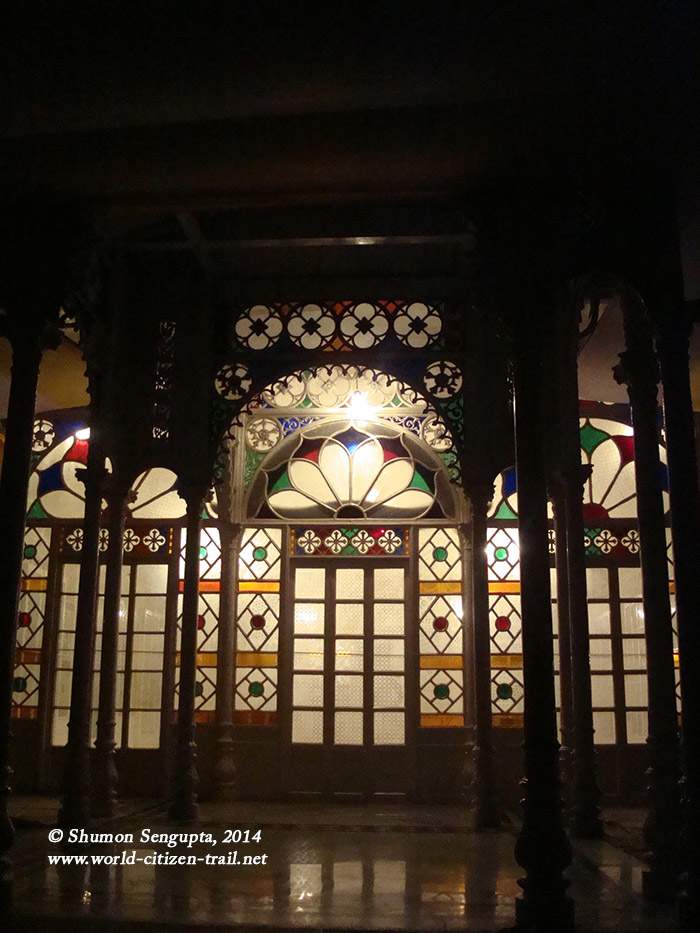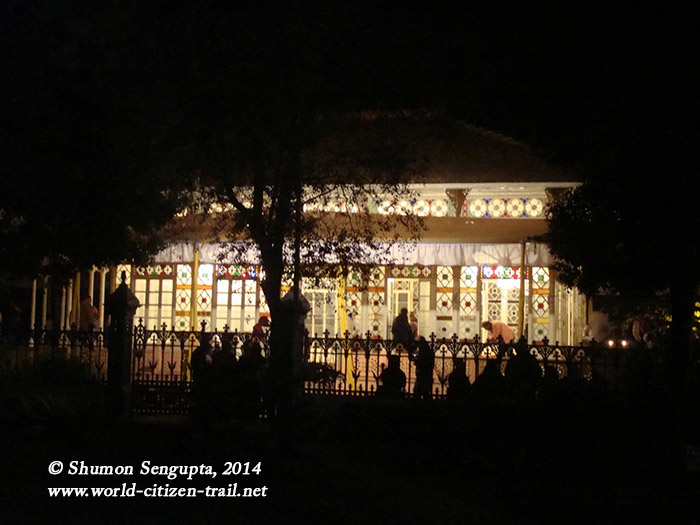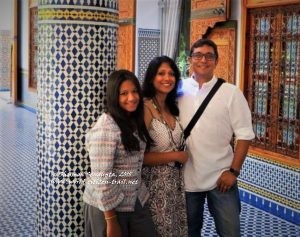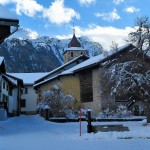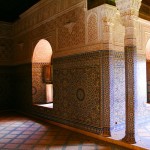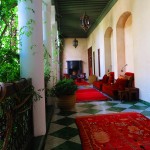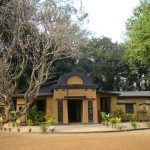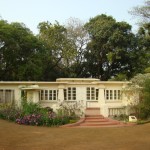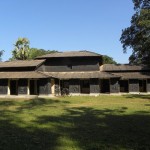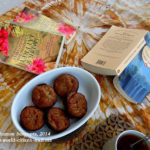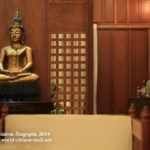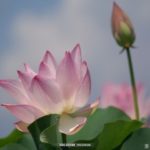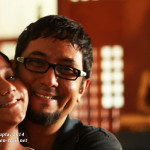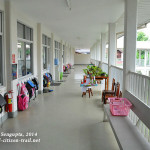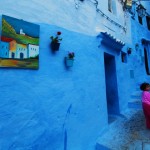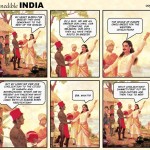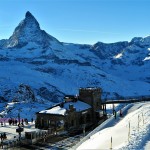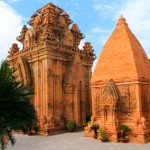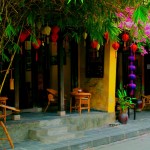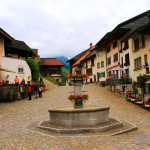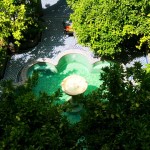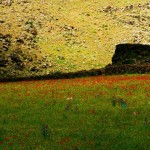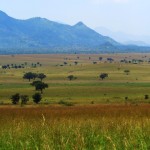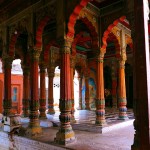Shantiniketan, West Bengal
21st – 27th January 2012
My eight year old daughter Madhura (Minnie) and I spent the first phase of our very exclusive and exciting Father-Daughter holiday in India, at Shantiniketan.
We flew to Kolkata from Vientiane, (via Bangkok) late in the night on the 20th of December 2011 and proceeded to Shantiniketan the following morning by train, which we boarded at one of the busies and chaotic railway stations in the world – the Howrah Railway station. We were joined by my best friend, travel and music conference buddy – Smita (Debasmita Moulick) who was on her annual sojourn to India from Moscow, where she has been living for the last two decades.
The train (Shantiniketan Express), traversing the lush green, sun soaked landscape of southern Bengal, halted briefly at Burdwan Junction. There onwards, the scene changed to a drier, open space, red-earth (lateritic) landscape dotted with few trees (mainly palm), bamboo groves and paddy fields.
In the train, we opened our food hamper and has a sumptuous breakfast of Luchi (deep fried, crisp, unleavened Indian bread), Aloo-dum (curried, spicy potatoes) and boiled eggs, washed down with syrupy creamy tea of the Indian Railways – ready to take on what promised to be an exciting and enriching experience ahead. The delicious breakfast was followed by one of most unique railway experiences in the world – the Bauls (wandering heterodox mystic minstrels) treating us to some of the most earthily melodious songs with deeply philosophical / esoteric meaning.
As our train pulled into Bolpur railway station (which serves Shantiniketan, located 5 kms away) three hours later, a strange, rather elevating feeling seemed to grip us. In the back of our minds was the fact that we were in proximity to a place that had helped redefine modern Indian aesthetics as no other place in India had done; a place that had also helped take the Bengali sensibility to its most exalted heights. The charm and depth of Bengali culture and language was profoundly refined and enhanced by Tagore in this place and we were subconsciously aware of this.
From Bolpur, we took rickshaws that took us through the road meandering through Jamboni towards Sriniketan*. We took the right turn at little lake called Kali-Shair (by the bank of which is an ancient Kali temple believed to be a haunt of dreaded dacoits ages back) before the road reaches Sriniketan. At the end of the pleasant thirty minute rickshaw ride we reached home to find my mother, who is 78, completely independent and chooses to live all by herself in our little house in Shantiniketan, waiting eagerly to welcome us. She was particularly delighted to see her granddaughter who she was meeting after a rather long gap.
After a couple of hours of catching up, taking a warm bath and enjoying a delicious lunch of daal (lentil soup), vegetable dishes, mild fish curry, sweet-and-sour chutney and payesh (the Bengali rice pudding made in an approximate proportion of 1 part rice and 20 part milk, thickened over a slow flame to a thick creamy consistency), we hit the road to the Shantiniketan Ashram. It was a pleasant twenty minute walk to the Ashram area. On the way we passed what is called the “45-Quarters” residence of teachers, the Balipara Santhal village, Pearson-pally Santhal Village and Amartya Sen’s residence by the name “Pratichi”.
At this point some background on Vishwa Bharati and Shantiniketan would be in order, particularly for those who haven’t been there or are not fully aware of its background.
Shantiniketan, literally “Abode of Peace”, was founded in 1863 by Maharishi Debendranath Tagore, (father of Rabindranath Tagore) as a center for contemplation and meditation. In 1901 Rabindranath Tagore established an open-air school, initially called Brahma Vidyalay and subsequently Patha Bhavan. By 1921 the latter had expanded into Vishva Bharti University, which sought a basis for a common fellowship between the cultures of East and West. Vishwa Bharati is a largely residential university with an international student body, hostels, and extensive grounds. It includes colleges for fine arts and crafts, Sino-Indian studies, music and dance, research in Asian languages, teacher training, technology, and postgraduate studies and research. Rabindra-Sadan is the university’s museum and academy for the study of Tagore within the Uttrayan sub complex. Another Nobel laureate, Amartya Sen, studied at Shantiniketan, as did Satyajit Ray the noted Indian film maker and Indira Gandhi. Many outstanding Indian painters have studied there and during and around the time of Tagore and immediately thereafter, Vishwa Bharati boasted of an international faculty of eminent teachers and scholars from various fields. Very few people are aware of the fact that every page of the original, hand written Constitution of India was designed and illustrated intricately and exquisitely by artists in Shantiniketan.
Tagore built Vishwa-Bharati (which later went on to become a central University, along with a school) as a unique educational and cultural center where the best of Indian culture (in its widest sense) would flourish in cooperation with the best of the world. It was Tagore’s wish that writers, artists, musicians, thinkers and men and women of action who shared his ideals should come and settle in Shantinketan. While Vishwabharati is an institution, Shantiniketan is a community of like-minded people who shared Tagore’s ideals.
The aim of Vishwa Bharati, where the world would form a single nest, was to seek out the essential unity and humanity in different religions and cultures across the world. Vishwa Bharati, under Tagore’s care, came to combine a mix of elements, including education of children in a free and nature-loving environment, the use of music and the arts as instruments for emotional development, social work to help neighbouring villages, the promotion of rural development through Sriniketan and research on philosophy and cultures. Vishwa Bharati was created as an environment for all who wanted to pursue their creative activities in peace and quiet.
About the Patha Bhavan – Amartya Sen, who studied there said: “Academically, our school was not particularly exacting (often we did not have any examinations at all), and it could not, by the usual academic standards, compete with some of the better schools in Calcutta. But there was something remarkable about the ease with which class discussions could move on from Indian traditional literature to contemporary as well as classical Western thought, and then to the culture of China or Japan or elsewhere. The School’s celebration of variety was also in sharp contrast with the cultural conservatism and separatism that has tended to grip India from time to time.
Appreciation of nature and cultivation of arts, crafts, music and aesthetics was to be a constant current, along with contemplation and direct action in areas of rural development.
The special feature of Shantiniketan is its atmosphere – the trees, the red gravely ways, the cottages and artistic homes, the sunlight filtering through in streaks between the trees, the various sights and sounds. The beauty of Shantiniketan is rather unique. In contrast to the lush greenness of other parts of Bengal, Shantiniketan is dry and rugged with various shades of brown, yellow and red. Shantiniketan still largely a world of open spaces, vaulted over with a dustless blue sky that induces contemplation and a sense of wonder.
It has been over six decades that Tagore has passed away and Vishwa Bharati has significantly, and for many of us very painfully, diverged dramatically from Tagore’s ideals. However, as we entered the Ashram complex, we sensed that there was something subtle, something ethereal – something in the atmosphere which is impossible to define or describe. There seemed to be an unseen presence to be felt by the inner self and we were overcome with a sense of immense peace and wonder. To this day the Ashram area seems to have an unexplained magic – a haloed ground that overwhelms us with a sense of quietude, contemplation, infinite joy and wonder.
We spent five days, exploring every nook and corner of the place. Smita, who had spent three under-graduate years in Shantiniketan threw light into the history of different places, to which I added my own understanding of the history and significance of the Kala Bhavan, Sangit Bhavan and Patha Bhavan. As for me, Shantiniketan is a place where my paternal Grandfather had settled after moving on from Bangladesh and I had spent a large part of the first five years of my life here. This was the place where three of my aunts and an uncle studied, one of them being the topper in Sangeet Bhavan during the time of Smt. Indira Devi Chaudhurani (the Niece and true inheritor of Tagore’s legacy). My grand-mother, who was a close associate of Smt. Indira Devi, was actively associated with the Alapini Mahila Samity – the association which was set up earlier by Smt. Pratima Devi, Tagore’s daughter in law. For me Shantiniketan therefore has always been my real home although I have spent most of my life so far outside Bengal.
Smita and made attempts to explain the history and significance of Shantiniketan to Minnie in simple words. More than what she heard from us, she seemed to soak up every bit of what she saw and the music she heard in the air and at the special events she witnessed. To the extent that at the end of the visit she very precociously said that she would like to join Sangit Bhavan or Kala Bhavan for her higher studies. The magic of the place is such that even an eight year old is moved.
This trip was a wonderful reminder to us of some of the best that Tagore wanted Shantiniketan to represent – of cultivation of the finest values that we hold dear, of humanism, internationalism, freedom (of thought, knowledge and action), compassion, harmony, love of nature and aesthetics; of personal refinement, humility and dignified restraint and finally, of our responsibility towards ourselves, the future generation, the environment and the world at large.
For us, there couldn’t have been a better beginning to the new- year. I am delighted to attach an album that attempts to capture our amazing trip to Shantiniketan, which in many ways was an unconscious journey to our inner selves.
*Sriniketan is an institution and the twin campus founded in 1922 by Tagore and his close associate Leonard Elmherst is concerned with rural reconstruction, health, social welfare, and the revival of ancient arts and handicrafts.
Note:
The “Ashram” denotes the core area within Shantiniketan that hosts the following:
- Uttarayan Complex – the houses that Tagore lived in and the museum (Udayan)
- Shantiniketan Griha – the first house that Tagore’s father, Maharshi Debendranath had built,
- The Chitam Tala – the bower in which Maharshi Debendranath would meditate under the chatim (Alstonia scholaris) tree.
- Mandir or Upasana Griha – The non-denominational temple
- Amra Kunja (mango orchard), the site for the school and university convocations
- Shaal Bithi – the bower of Saal (Shorea robusta) trees
- Benu Kunja – the area adjoining the Shaal Bithi
- Gaur Prangan – the large open square in the middle of the campus, also the erstwhile site of the famous annual spring festival, the Vasanta Utsav.
- Patha Bhavan – the primary school and the earliest educational experiments in India
- Spaces for open air classes and enclosed class rooms
- Vidya Bhavan – center for graduate and post graduate studies
- Ananda Pathshala – the pre-primary school which I had attended at one point in time.
- Sangeet Bhavan – the college of music and dance
- Kala Bhavan sub complex – the college of Arts, with its sculptures, murals and frescoes.
- Cheena Bhavan – the center for Sino-Indian studies
- Hindi Bhavan – the center for Hindi Studies
- Girl’s hostels (particularly the Sri Sadan) and teacher’s quarters
- Tala-dhwaj (literally the Palm Flag) – a small mud house, whose simple and exquisite beauty is impossible to describe in words.
We attended the various events held in the Ashram and this included the following:
- 6th Poush late night baitalik (program) and the “poush utsav shuchona” by the family of Shehnai players whose grand parents performed on the eve of Poush Utsav, when Tagore was alive. This took place at the Shantiniketan Griha.
- 7th Poush music congregation at 7.30 in the morning at the Chitam Tala
- Ashramik Sahgna’s sriti-charan (recounting of memories) meeting at the Amra Kunja.
- Vishwa Bharati Praktonik (alumni) meeting at the Amra Kunja
- The annual convocation of Patha Bhavan and Shikkha Shatra at the Amra Kunja stage.
- Annual meeting of the Alapini Mahila Simity (Women’s Association) that was set up by Smt. Pratima Devi of which my Grandmother was an active member during the time of Indira Debi.
- The Chirsta Utsav (Christmas) at the Upasana Ghar on 25th evening.
- Finally, the Poush Mela
